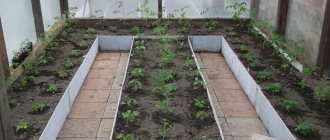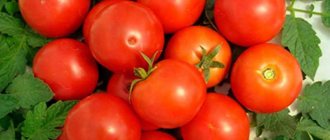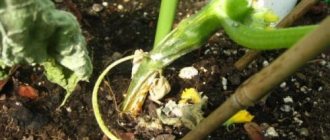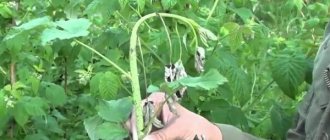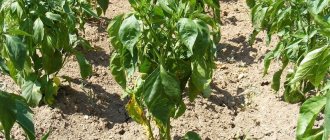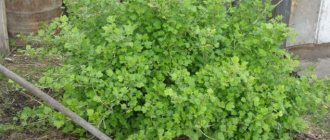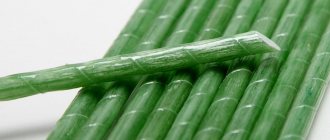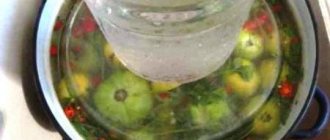Vegetable growing » Tomatoes
0
1648
Article rating
Kira Stoletova
Sometimes tomato leaves wither for natural reasons, but in most cases this is the result of improper plant care. The reasons for withering and ways to solve the problem will be discussed in the article.
Causes of leaf wilting in tomato seedlings
Improper feeding of plants
Agronomists argue that the organization of the fertilizing process seriously affects the development of many crops. Moreover, not only a low amount of nutrients will be harmful, but also their excess.
To determine exactly what substances tomatoes lack, you should look at exactly which parts of the plant are wilting. In the case when old leaves turn yellow, fertilizing with zinc, magnesium and molybdenum should be organized.
Many people are interested in why the tops of tomatoes wither and what fertilizers should be applied. In this case, the plant lacks one of the following elements:
- manganese;
- chlorine;
- boron;
- calcium;
- iron;
- sulfur.
It is enough to add those substances that are deficient in order to resume normal growth of tomatoes.
Nitrogen deficiency
Due to the lack of this element, tomatoes will experience poor growth. The leaves will be sparse, and the bush itself will be small in size. At the same time, the veins on the leaves will acquire a crimson hue, and over time the entire plant will begin to turn yellow and wither.
To solve this problem, you need to water the bushes with a urea solution. For every 10 liters of water you will need 30 grams of fertilizer.
The lower leaves dry out and turn yellow
If the cotyledon leaves dry out and fall off when the top of the seedlings is already sufficiently formed, then this is considered normal. In other cases, you should look for the reason:
- excess moisture;
- lack of nitrogen;
- low concentration of potassium in the soil;
- lack of lighting.
Violation of the watering regime
Tomatoes love water, but only if the watering regime is strictly followed. The standard scheme is once every 4-5 days in sunny weather and once every 7-8 days on cloudy days.
Due to excess moisture, the roots rot, which disrupts nutrition. In this case, it is the lower part of the seedlings that suffers. The lower leaves begin to turn yellow and dry out.
What to do:
- developing an irrigation regime based on the conditions in the room where the seedlings are grown;
- reducing the volume of liquid while simultaneously spraying air around containers with seedlings;
- loosening the soil after watering to enhance air exchange in the root zone.
Lack of lighting
Tomatoes are considered a warm and light-loving crop. Lack of lighting leads to disruption of the photosynthesis process. Plant damage begins from the lower tier.
The first symptom is discoloration and dryness of the lower leaves. Gradually the whole plant begins to wither and the seedling dies.
Lack of lighting rarely leads to disease in all seedlings at once. Yellowing and dryness of leaves begins with seedlings that stand farthest from the light source.
What to do:
- installing reflectors if the seedlings are on the windowsill;
- use of phytolamps;
- thinning seedlings.
By adjusting the lighting mode, you may encounter another problem: burning of young foliage.
When growing tomato seedlings in sunny windows, the rays hit the seedlings, causing small white, almost transparent spots to appear on the leaf blades.
What to do:
- shading;
- spraying with Epin solution.
Lack of nutrition
With a lack of nitrogen, tomato seedlings quickly turn yellow and dry out. This occurs when the volume of containers does not correspond to the age of the seedlings.
A secondary symptom is that the ground part becomes faded, and new leaves grow very small. In some cases, the veins acquire a red tint.
Nitrogen starvation is typical for seedlings and plants up to 4-5 true leaves.
Prevention:
- application of complex fertilizers with a high content of this element;
- watering the seedlings with infusion of chicken manure.
With a lack of potassium, the edges of the lower leaves dry out, turning outward. The ground part becomes discolored.
Tomatoes most often suffer from a lack of potassium after transplanting into the ground.
Prevention:
- watering with infusion of wood ash;
- application of potash fertilizers.
Causes of problems with lower leaves - video
Symptoms of calcium deficiency
If there is an insufficient amount of this element, the tops of the tomatoes will wither and the leaves will turn yellow. The root system is also damaged.
To solve the problem, you should water it with warm water, to which you need to add 5 grams of calcium nitrate (per bucket).
Signs of other deficiency
With a small amount of chlorine, shoots and young leaves begin to die. With a lack of manganese, the leaves of the plant first become very bright, after which they quickly wither and dry out. And boron deficiency is accompanied by wilting of the upper part of the plants.
When the amount of molybdenum is low, yellow dots appear on the leaves and the edges begin to curl upward. And tomatoes need magnesium during the growing season.
A deficiency of this substance leads to yellowing of the leaves and further wilting of the bush.
Soil acidity control
Even if tomato seeds were sown in neutral acid soil, monitoring the pH level is necessary throughout the entire seedling period.
Acidification of the soil mixture is caused by:
- excessive watering, which results in leaching of calcium, potassium, magnesium and sodium;
- violation of fertilizing with an excess of nitrogen fertilizers.
What happens to seedlings with high acidity:
- loss of turgor in leaves and stems;
- yellowing of leaf blades, starting from the lower tier;
- leaf falling;
- drying of the stem in the root zone.
How to reduce the acidity of the soil in which tomato seedlings grow:
- for young seedlings that are still too early to sprout, dust the ground with wood ash;
- When picked, plants are transferred to soil of lower acidity;
- if seedlings are grown in a greenhouse, then remove the top layer of soil and wash it, adding dolomite flour at the same time.
What happens to seedlings with low acidity:
- In alkaline soil, the concentration of salts increases, which interferes with the absorption of nutrients from the soil. Plants stop growing, wither and dry out;
- in heavy and dense soil due to a high concentration of salts, air exchange is disrupted, which leads to the death of the root system. The first sign is loss of turgor in the aerial part.
How to increase the acidity of the soil in which tomato seedlings grow:
- for seedlings that have not yet been picked, laying sphagnum moss on the top layer of soil;
- after picking - add oak leaf compost to the soil;
- watering with a solution of ferrous sulfate.
Tomato wilting due to improper temperature conditions
Tomatoes are very difficult to tolerate sudden temperature changes. This may be one of the reasons why tomatoes in open ground wither, even with proper watering and fertilizing.
During the day, the optimal temperature for this crop is considered to be 22-30 degrees. And at night the thermometer should not fall below 12 degrees.
The maximum difference between day and night temperatures that tomatoes can safely survive is only 5 degrees.
Therefore, it is best to grow tomatoes in greenhouse conditions. In this case, it is much easier to regulate the air temperature.
If the leaves begin to curl, this indicates the influence of the heat. The way out of the situation would be to build canopies that protect from the sun's rays.
When tomatoes are grown in a greenhouse, it is worth periodically ventilating the room. Otherwise, condensation may form, which will harm the plants.
Improper watering of tomatoes
Tomatoes are considered one of the most demanding crops when it comes to watering. Both excess and lack of moisture can lead to dire consequences. Often the wilting of tomato leaves is due to improper watering.
Experts recommend watering tomato beds 1 or 2 times a week. Each bush will require from 2 to 10 liters of warm water, depending on the period of tomato development and air temperature. Young shoots require more moisture than plants during the formation of ovaries.
It is necessary to water at the root, avoiding moisture on the leaves and stems of the plants. Otherwise, sunburn may occur, as well as the development of harmful bacteria.
In the greenhouse, you need to ensure that the humidity level remains low. To do this, it is necessary to ventilate the room.
The tips of the leaves and edges of tomato seedlings dry out
If the tips and edges of leaves wither and curl, this is a consequence of violating the rules of plant care. The very first thing to check is:
- humidity level in the room where the seedlings are located;
- soil salinity level;
- acidity of the soil mixture.
Air humidity
Tomatoes develop well at a relative humidity of 70%. If the room is hot and containers with seedlings are placed near central heating radiators, then the air around them must be humidified.
There should always be a hygrometer hanging in the room with seedlings. If there is no device, use traditional methods for determining air humidity.
A glass of frozen water is placed on a table away from a heating source and observed for 5-10 minutes. If during this time the walls of the glass fog up and dry out, then the air is very dry. If it starts to drip, it's over-moistened.
Plants begin to react gradually to dry air. If suddenly all the seedlings dry out at once, then a disease can be suspected.
Prevention:
- use of humidifiers;
- spraying from a spray bottle, but only on condition that the drops do not fall on the plants themselves;
- hanging wet towels.
Soil salinity
If there is an excess of salts in the soil, the seedlings will not only dry out the edges of the leaves, but also white or yellow spots will appear on all leaf blades. The cause of salinity is watering with hard water.
A secondary sign of a problem is a white crust on the ground.
The higher the level of salts in the soil mixture, the harder it is for the plant to suck nutrients from it.
First, the leaves will react to the lack of nutrition, their edges will gradually begin to dry, and then the above-ground part will begin to lose turgor.
Prevention:
- cutting the top layer of soil by about 3-5 cm;
- watering with settled, or even better, melt water;
- fertilizing exclusively after 2 weeks and only with complex mineral fertilizers.
Important: if there is a risk of salinization of the soil mixture, then compositions containing magnesium, calcium and chlorine should be avoided.
Increased soil acidity
In acidic soil, the concentration of potassium decreases. This element is considered the most beneficial for tomatoes. Potassium is involved in the main metabolic processes occurring in plant tissues. It is necessary for the development of the root system.
The balance of soil microelements can be checked in laboratory conditions. At home, acidity is checked using litmus paper. If it is elevated, then we can most likely talk about a lack of potassium.
Prevention:
- watering with infusion of wood ash 2 tbsp. per 1 liter of water, diluted in a ratio of 1:5;
- banana peel infusion at the rate of 3 peels per 3 liters of water. Leave for 2 days, dilute in a ratio of 1:1.
The tips of tomato leaves dry out and curl - video
Wilting of tomatoes as a result of diseases
There are situations when tomatoes wither due to diseases caused by bacteria. A sign of such diseases is the presence of brown spots with light edges.
Fusarium wilt is considered the most common disease. In this case, the leaves turn yellow, begin to curl and fall off. The tops of the plant wither.
Disease Prevention
Violation of agrotechnical standards leads to bacterial and fungal diseases. The result is wilted seedlings with subsequent death of seedlings.
- Fusarium. A fungal pathology that affects the vascular system of a plant. The disease spreads from bottom to top. First, rot appears in the root zone, and then, due to malnutrition, the entire plant quickly withers. The first sign is a sudden drop of the lower leaves. Treatment - treatment of bushes with biological preparations Alirin, Gamair, Trichocin. Prevention - disinfection of seed, adjusting the irrigation regime, installing additional lighting.
- Blackleg. It develops as a result of stagnation of moisture in the soil. The roots are affected, and the disease quickly spreads into the plant tissue. The main symptom is blackening of the stem at the root collar. The dangerous period is the age before the pick. Prevention - treating the soil with a manganese solution, dusting the top layer of soil with wood ash, loosening after watering.

